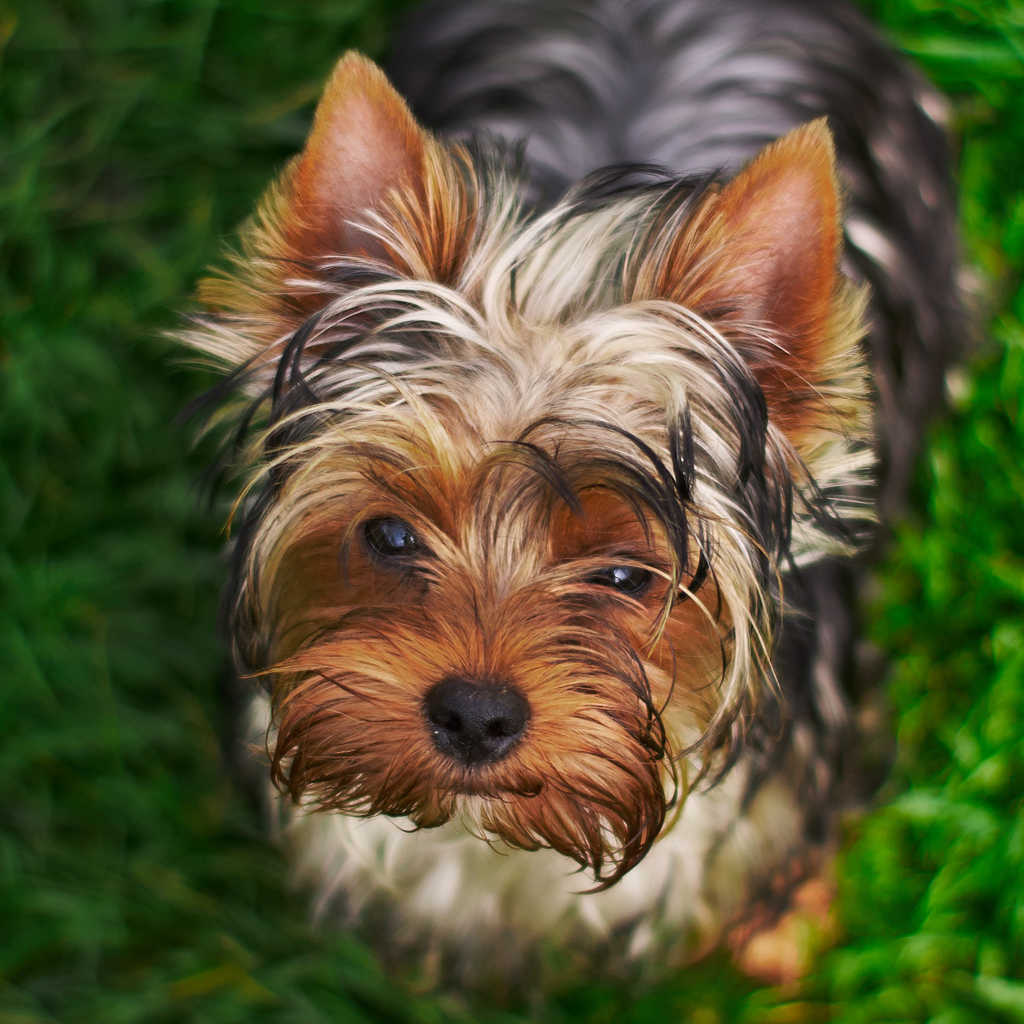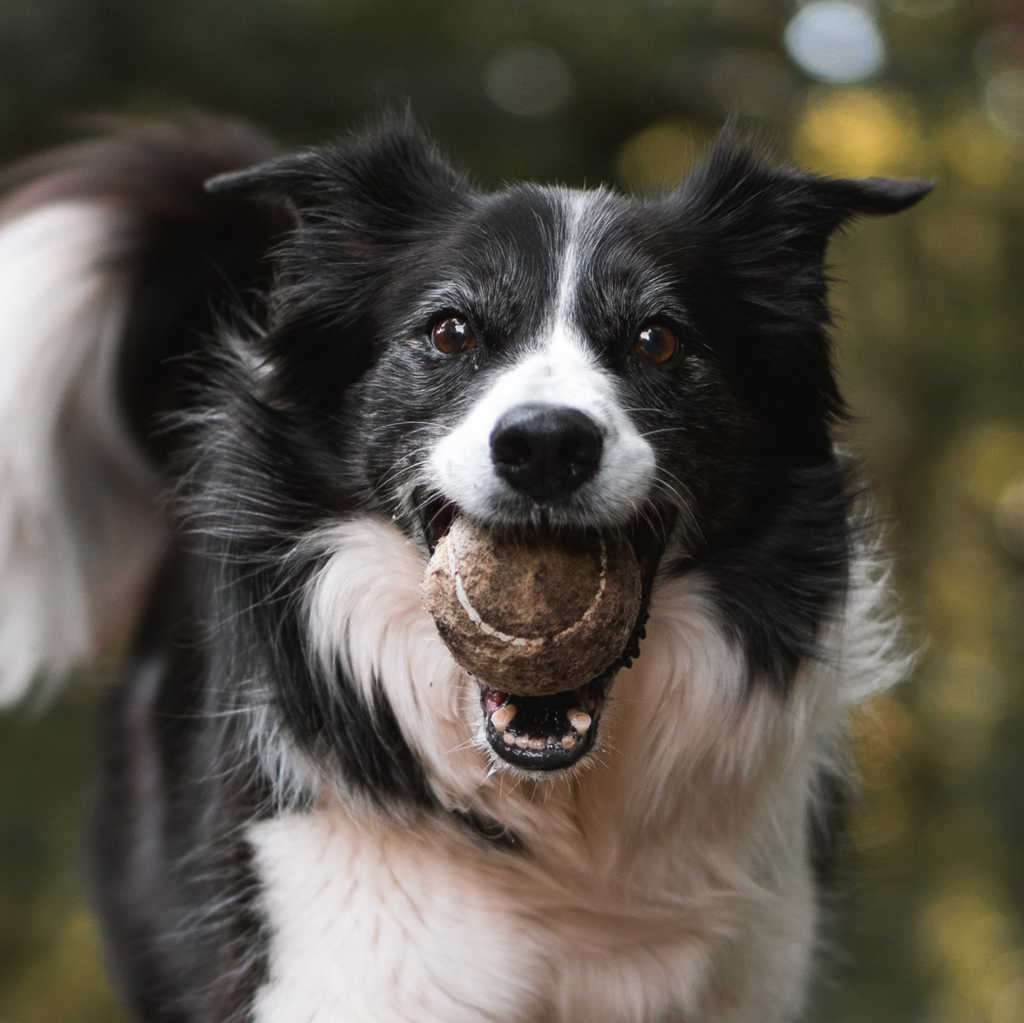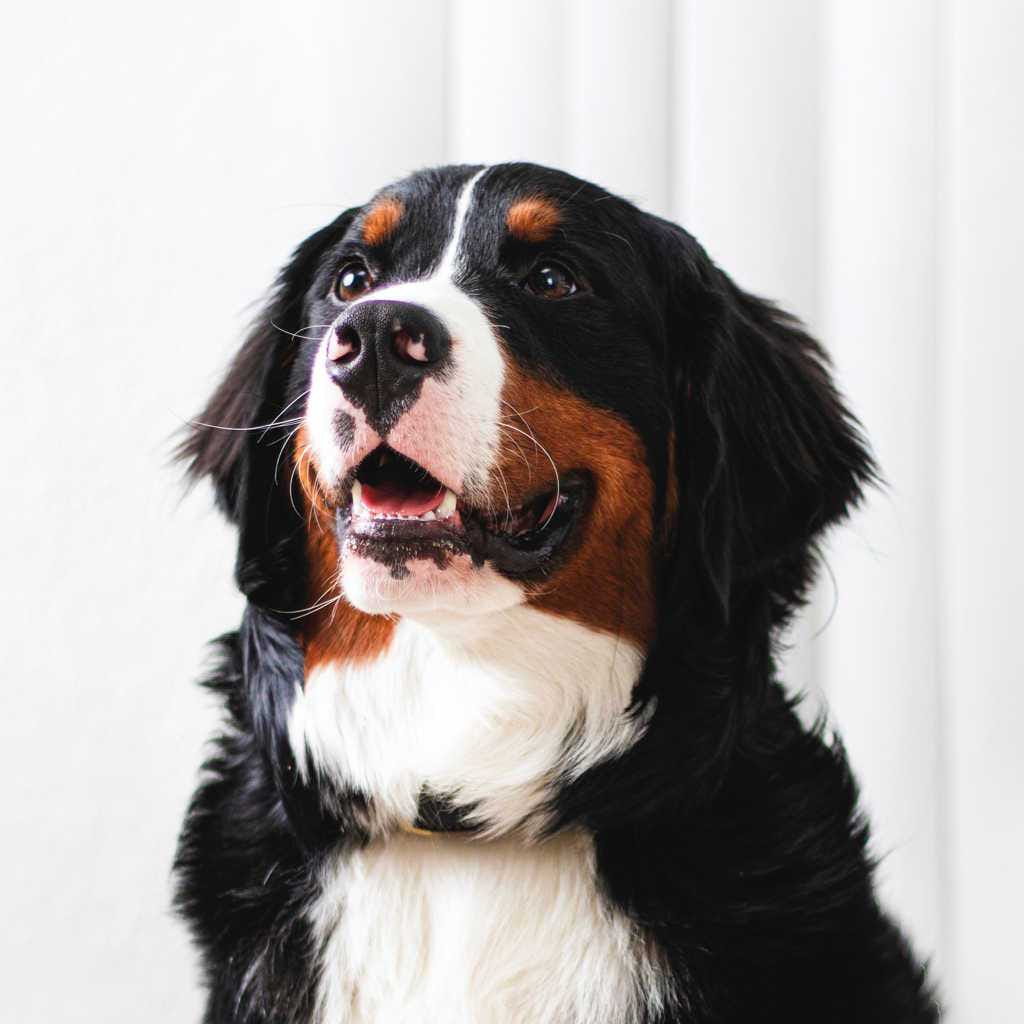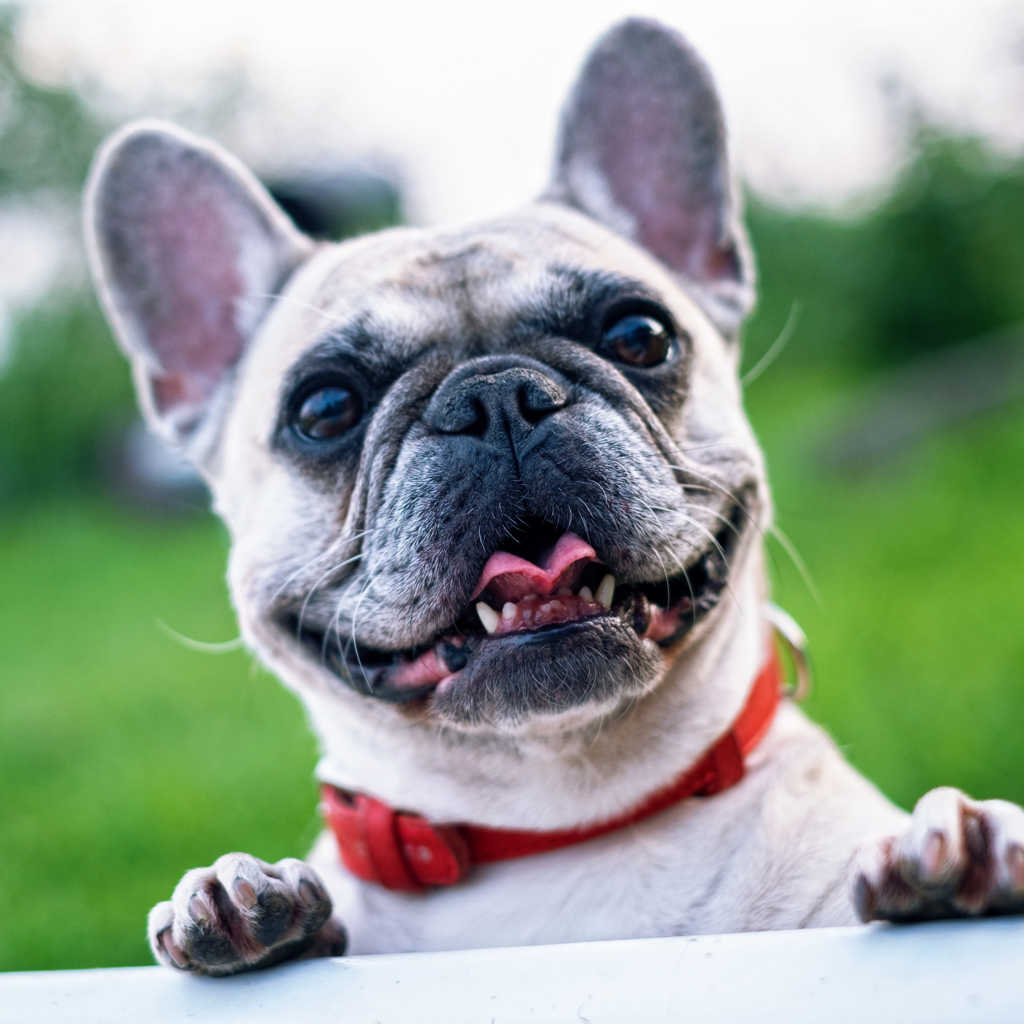Interesting facts about dog
breeds
There are more than 390 different dog breeds recognized by the Fédération Cynologique Internationale
But worldwide there are more than 800 different breeds to be estimated. The FCI classifies them according to the different breed characteristics and peculiarities. Another subdivision is according to their function as for example family dog, hunting dog, guard dog or service dog. A simplified categorization is made according to their size measured at shoulder height.
DOGS EARS
Why your dog can hear fleas coughing
A dog’s hearing is truly fascinating. Just a moment ago he seemed to be sleeping peacefully. You only move slightly on the sofa and he is already standing in front of you with his tail wagging. This is because all dog breeds can hear sounds in the ultrasonic range. We humans can no longer perceive them. Dogs’ ears register sounds down to the infrasound frequency of under 16-20 Hz. They have 17 different muscles which make them so flexible. They can also sleep peacefully in their bed in the greatest hustle and bustle. In doing so, they shut out all background noise that is unimportant to them. But their hearing itself remains active. If they hear a signal or a favourite sound, they are immediately alert again.
DOGS EYES
With your dog you don’t have to be afraid of the dark
All dogs, regrdless of breed, see moving images particularly well. Unlike humans, this refers mainly to twilight, or night. Basically, they see just as well during the day as at night. In twilight dogs’ eyes reflect the incident light twice. This makes them much more sensitive to light. Dog eyes cannot distinguish between colours with medium and long wavelengths. These are, for example, yellow, orange and red. Your dog will therefore not be interested in watching TV with you. But he is the perfect companion in the twilight. He recognises distant movements immediately.
DOGS NOSE
Your dog is the ultimate expert sniffer
The dog’s nose is the most widely used sensory organ in dogs. In contrast to the human nose, which has 5 million olfactory cells, a dog has up to 220 million olfactory cells. This enables them to follow wild animal tracks for kilometres.
He recognises who is at the door by the smell. By sniffing, they can breathe up to 300 times a minute. Therefore they absorb many times more odour particles than humans. The area in the brain responsible for processing odours is about 10 times larger than in humans. When sniffing, odour images are created, some of which are stored in the dog’s memory for the rest of their life.
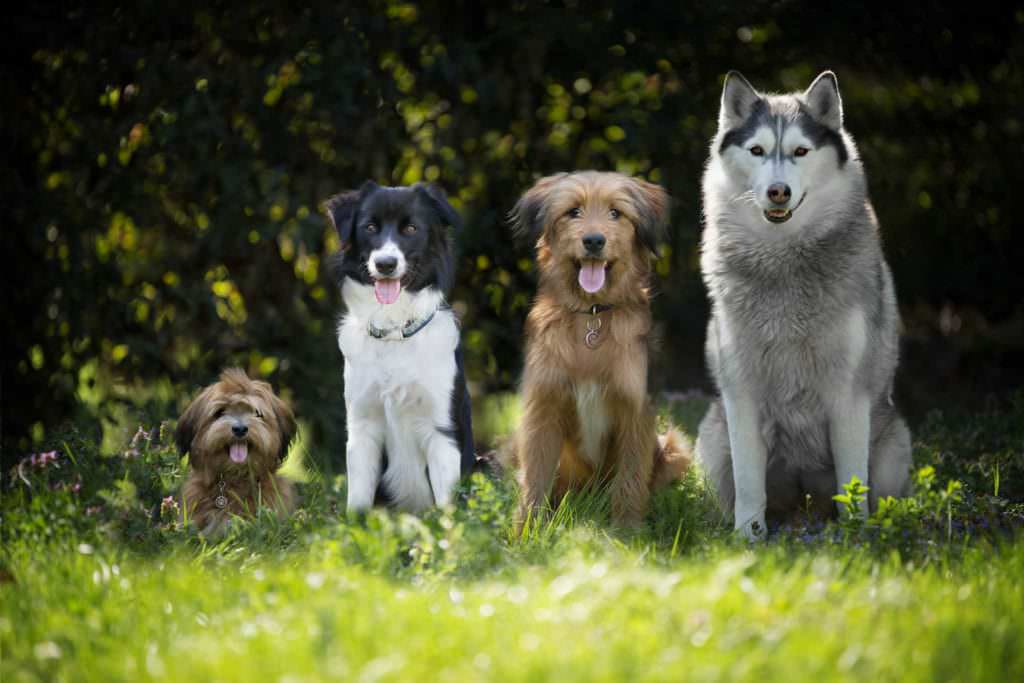
Dog education
Every dog owner wants a harmonious life together with his pup. For this, basic training is important for every dog breed. You can reach your goal with loving consistency. Dog training is not only for professionals or for large dogs! Every dog needs to be trained I’s important that your dog learns to react without stress in different situations. For example, when encountering a group of people, or a cyclist. Every human-dog team can therefore work out some basic rules together in a positive way. Otherwise it can quickly happen that every walk becomes a gauntlet. Neither you nor your dog will enjoy that. Dogs are not made to do nothing, they have a natural urge to move and learn. They respond very well to positive reinforcement training. Fears of overtaxing or even harming your dog are unfounded.
In addition, the training strengthens the bond with your dog. You form a unit. With the basic signals, you can make your dog’s everyday life more positive, relaxed and safe. The right amount of patience, love and consistency is crucial. With patience you never have to become unjustifiably loud or too strict. With consistency, you are guaranteed to reach your goal. And you should always have a portion of love ready for your pup anyway.
Our top 5 signals that your dog should know and be able to do
This are training tips for all dog breeds. You can ask good dog trainers or dog training centres how to practise them best.
THE RECALL
“This way”
“That way”
“Come here”
One of the most important signals! Your dog should know and follow the recall. Whether at home or on the road. You show your dog that in any situation, he should break it off and come to you immediately. A consolidated and generalised recall is really worth its weight in gold! Learned correctly, it can be used in any situation.
THE RELAX SIGNAL
“Lie down”
“Go to bed”
“Go to blanket”
This is a signal to relax. Many dogs are fidgety and find it rather difficult to calm down. For such dogs, it is extremely important not only to exercise them completely all the time. But also to teach them how to relax. Use an aid such as a dog blanket or similar. This is a great support for your dog. Because your dog associates the relaxation exercise with this object. This is a positive link. Your dog learns that blanket = relax. Of course, the blanket can also be used on the go. So you create that positive effect everywhere.
THE STOP SIGNAL
“Let go”
“Stop that”
“Stop it”
This signal is intended to make your dog let go of an object (e.g. toy), break through a situation (e.g. pick up something from the ground) or stop an unwanted behaviour (e.g. jump up at people). The stop signal is a very important signal to protect your dog.
THE CONCENTRATION SIGNAL
“Check”
“Look”
“Eyes”
This signal is a concentration exercise. When you ask for it, your dog should look at you and concentrate on you. This signal helps dogs that are easily distracted. It makes it easier for them to listen to follow-up signals.
THE STAY SIGNAL
“Sit”
“Wait”
“Stay”
With this signal, your dog should sit or lie down and wait for a follow-up signal. This is very helpful when feeding, for example. Your dog should not run over you when you come with the full food bowl, but wait patiently. This way you can place the bowl on the ground with no worries. Only when you stop this signal with a follow up signal your dog is he allowed to go to the bowl. During a walk, your dog should also wait calmly if you stop to talk to friends. This signal is also helpful before crossing a street. This way your dog learns that he should be especially attentive at this point.
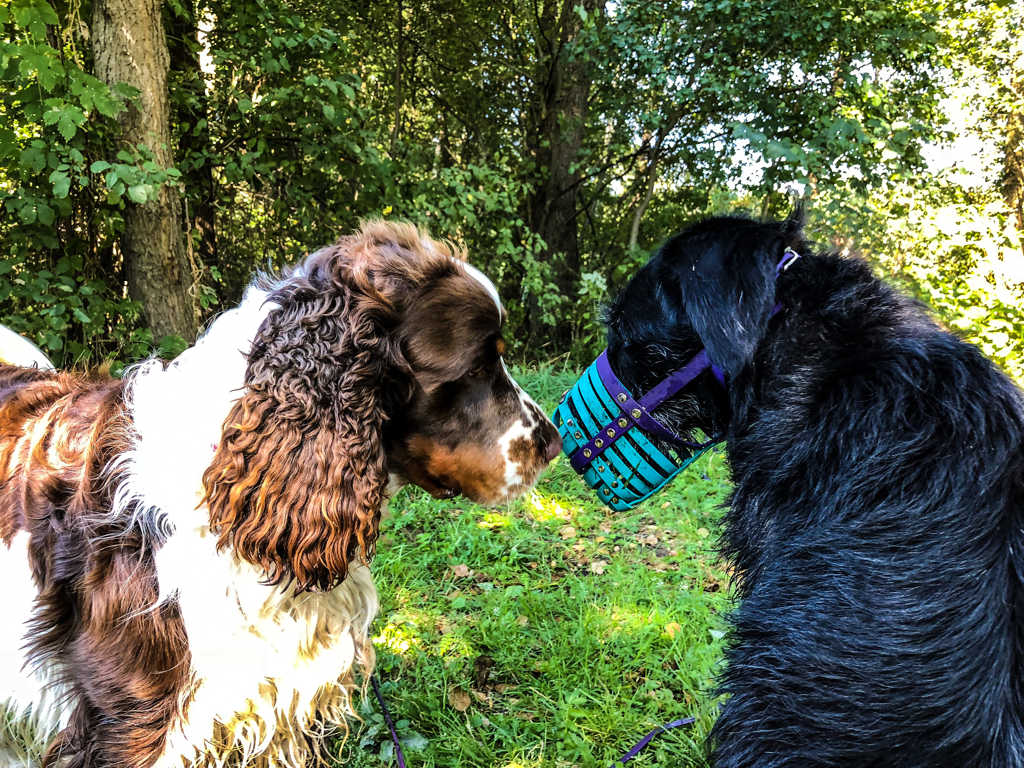
Muzzle training
Imagine the following situation. Your dog has injured the paw while out walking. You have to take him to the vet. For safety reasons, a muzzle is put on him there. Your dog has never experienced this before. What additional fear will he feel? What memories will he have of it? What effect will this have on future situations in which he will wear the muzzle? You can easily avoid this stress. Start as early as possible with Muzzle trainingThis way your dog will associate wearing a Muzzle positively from the beginning. It becomes a normal thing. A muzzle is not a punishment. But serves an important purpose in many situations, which is to protect your dog.
When is the muzzle an important tool?
Muzzles often still have a deterrent effect on other people. Dogs with Muzzle are seen as dangerous, or the owner as not particularly kind to animals. But the muzzle protects your dog. For example, as protection against eating poison bait, protection in stressful situations like vet visits and similar. Of course, it is also used to prevent biting and much more.
Each country has different regulations and requirements. Here in Austria non-compliance with these regulations can result in severe penalties.
Wearing a muzzle may be compulsory in the following situations:
- Travelling with public transport
- generally in public
- for certain defined dog breeds and all mixes of these breeds
- during vet visits
Before you go on holiday, be sure to check the regulations of the respective (federal) states.
What kind of muzzle should it be?
The basic requirement for successful Muzzle trainingwhich is also fun for your dog, is a comfortable fitting muzzle.
Comfortable
A BUMAS gives enough room for panting and drinking. Due to the lightweight of the soft and flexible material BioThane®, there are no sharp edges. This material surpasses leather in tear resistance by far. It has been tested from -30 to +80° Celsius and retains its suppleness and shape. Due to the ergonomic fit and the customised production, your dog will wear the muzzle as a matter of course. Similar to the way humans wear glasses on their nose. An original BUMAS protects without disturbing.
Perfect fit
You can customise your BUMAS to match the needs and character of your dog. This guarantees the best possible fit.
Stylish
You can choose from a wide range of colours for your custom made BUMAS and combine them.
Get in touch with our team.
Our experts are available for your inquiries.
